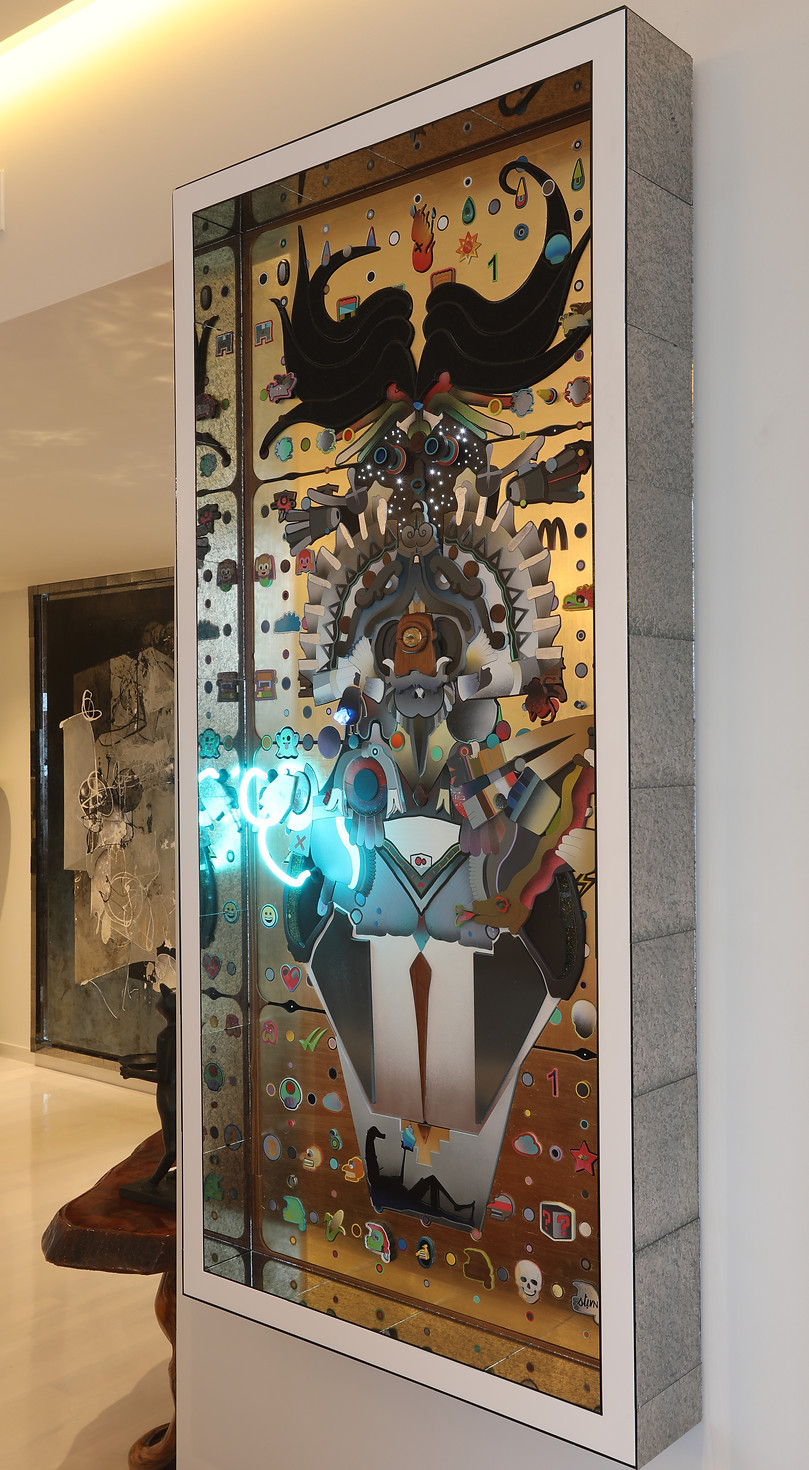

d_iOS presents itself as a digital-archaeological idol, a hybrid between pre-Hispanic deities, baroque altarpieces, and the saturated iconography of contemporary screens. Its surface fuses plexiglass and neon with quartz, jade, and Wixárika beadwork, producing a shrine where sacred matter coexists with mass-produced plastic. The result is an image at once archaic and futuristic, devotional and technological.


In the background, glyphs from the Codex Nuttall are set alongside WhatsApp emojis. Although separated by more than five centuries, their graphic clarity renders them curiously contemporary. By placing these visual languages side by side, Huacuja highlights how symbolic systems ancestral or digital function as codes of communication, myth, and power.
Here, Tlaloc reappears not as an ancient rain deity but as a techno-god of the digital age: an icon reframed by circuitry, light, and saturation. d_iOS thus becomes both altar and interface, collapsing history into a present where myth and code, devotion and consumption, converge.

d_iOS, 2018
d_iOS presents itself as a digital-archaeological idol, a hybrid between pre-Hispanic deities, baroque altarpieces, and the saturated iconography of contemporary screens.
Technical Sheet
Wood, plexiglass, spray paint, wixarika huichol, gold and silver leaf, lego, neon light, led light
Dimensions
80 x 180 x 12 cm
Weight
50 kg
Esteban Huacuja


© 2026 Esteban Huacuja Studio